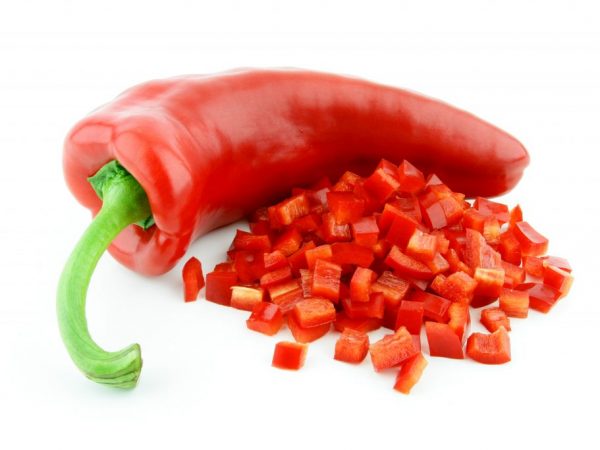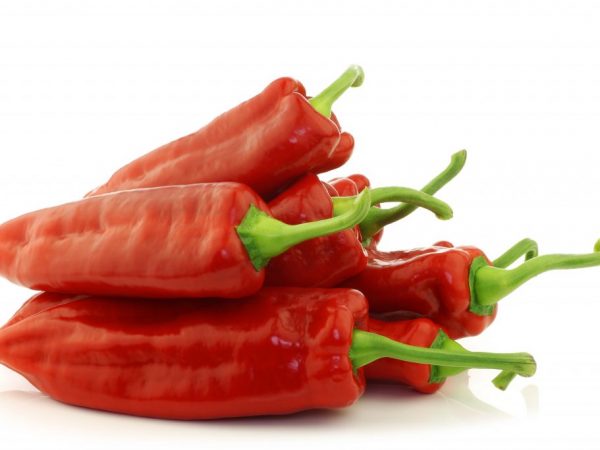Description of Kakadu pepper
Bell peppers, also called bell peppers, are characterized by a huge number of different types on the market today. Not all of them are large in size, taste good and marketable. Fortunately, there is 1 hybrid that fits this description - this is the F1 cockatoo pepper.

Pepper Cockatoo
General characteristics
Bell pepper Kakadu got its place in the State Register of Russia. Suitable for planting, both in a greenhouse and in open ground. The variety was developed by the Russian company Gavrish.
Several varieties of sweet pepper Kakadu - yellow and red - were immediately created. The characteristics of taste and the principle of planting are similar for these varieties.
External features of the plant
The description indicates the unusual structure of the bush. The height of the bush reaches 150 cm. The stem has no branches in its lower part, so the bush looks a bit like a low-growing green tree. An important feature of the variety is that the bushes do not need a garter. Due to the fact that the stem is strong and characterized by a high content of dense fibers, the stem does not bend from large fruits.
The leafiness is open type, with a moderate characteristic. The foliage is large and has a dark green color. There are small wrinkles on the surface of each sheet.
Fruiting occurs quickly enough, literally 90 days after planting the seeds. Agrofirm Gavrish assures that the first fruits begin to ripen only 115 days after planting. But, most of the gardeners are convinced that with proper care, this period can be reduced by 10-15 days.
Fruit type
Pepper Cockatoo f1 has the following characteristics of the appearance of the fruit:
- the shape of the fruit is a bit like a bird's beak, that is, it looks like a cylinder with a small curved nose - it is for this reason that the name Kakadu arose;
- the walls of sweet pepper Kakadu are thick and reach 10 mm;
- the color of the sweet Bulgarian vegetable is red;
- the length of an individual fruit can reach 30 cm;
- in the initial period of fruiting, the weight of the fruit can be about 500 g, but in the main period of ripening, the weight does not exceed 350 g;
- high yields: gardeners harvest about 12 kg of products from 1 m2.
Pepper Kakadu f1 has a pleasant sweetish taste with a small amount of piquant bitterness. Refers to the universal varieties. You can make delicious salads from this variety, preserve it, or use it fresh.
Seedling growing rules
If you buy seeds of this variety from an official distributor, then you can skip the stage of disinfection and treatment of seeds, because the Gavrish company warms up and pickles the planting material in advance, which is then released to the market. Seeds should be planted in early February.You should pay attention to the fact that this month there is not enough light for the correct germination of seedlings, so you need to take care of buying a phytolamp in advance.
It is important to prepare the soil before planting. The f1 Kakadu pepper variety needs light and fertile soil. You can prepare the land for planting yourself, if there is no way to purchase ready-made. To do this, mix humus, garden soil and sand, in a ratio of 2: 1: 1. The soil must be treated with Fitosporin in advance in order to destroy all harmful bacteria. The seeds must be immersed to a depth of 2 cm so that the root system can form correctly.

Proper soil and seed preparation is a must
Seedling care
Once the seeds have been planted, water the soil in the container and compact it. It is necessary to carefully monitor the moisture content of the soil so that it does not dry out. Watering is carried out in the morning and only with warm water. It is better absorbed by the root system. Do not forget about maintaining the optimal temperature at 20 ° C. It is at this temperature that the maximum process of seed germination is observed. As soon as the first shoots have appeared, the temperature regime can be lowered to 16 ° C. Phytolamps should be switched on daily so that the daylight hours for seedlings are at least 15 hours.
If you prepared the soil yourself, then the plant does not need feeding. Otherwise, you need to fertilize every week using a complex of minerals. Also, the containers need to be turned over to a light source every 3 days so that the seedlings form evenly. After the appearance of 3 pairs of leaves, the seedlings can be transplanted into open ground. To do this, it is necessary to harden it in advance by opening the vents in the room every day (literally for 2-3 hours).
Planting in open soil
The Kakadu pepper should be transplanted into open ground or a greenhouse, depending on the climate of the region. The thing is that this variety belongs to the thermophilic varieties and does not tolerate cold weather conditions. In the southern part of the country, planting in a permanent place is carried out in May, and in the central regions in June. Pay attention to the alkaline soil level. It should not be higher than 5%. Otherwise, you need to immediately add a solution of lime to the soil. You should also take care of the looseness of the earth, therefore it is recommended to add 2 tablespoons of peat or wood ash to each hole. These conditions must be met for the best yield.
Since Kakadu peppers have large bushes, the planting scheme must be carried out according to certain rules.
- The distance between the holes should be maintained at 65 cm.
- The distance between the rows remains at least 100 cm.
- Planting is carried out at a time when the sun does not bake too much outside, that is, the optimal time is morning or evening. Cloudy weather is also good.
- Before planting seedlings in the holes, they are watered with plenty of water. Immediately after planting, the soil must be watered again.
- The topsoil should be mulled with straw and humus. This will allow moisture to be retained in the ground and will not build up a crust on the surface of the ground.
Care features

Water the pepper with warm water only
According to the description, the Kakadu pepper variety needs proper care. Only in this case it is possible to achieve ideal indicators of yield and presentation. Watering should be carried out every 3 days, only with warm water (the optimum water temperature is 20 ° C). Watering should be abundant, almost to the formation of a puddle. Every 14 days you need to feed.
- A few days after planting. Chicken manure with a small amount of saltpeter is used as a fertilizer.
- During the beginning of flowering formation. You need to use potassium and phosphorus. These substances will help speed up flowering, which will significantly increase the number of fruits on the bushes.
- During fruiting.At this stage, potassium and phosphorus substances must be used again. They will allow the fruit to better reveal its taste. But nitrate must be abandoned so as not to disrupt the formation of the fetus.
You need to remember about the correct formation of the bush. The description of the Kakadu pepper variety indicates that it is imperative to remove the lateral shoots and branches growing from the bottom of the ovaries. After the fruits are full, harvest should be done. This is best done during technical maturity. That is, when the peel acquires a green glossy hue. Full maturation (reddening) is possible even in the storage room.
Parasites and diseases
If you take proper care of the plant, it will save the bushes from diseases. But, in some cases, late blight infection is possible. As a preventive measure, the bushes should be sprayed with a solution of Bordeaux liquid, in cool weather. If it happened that the disease began to affect the plant, then all the beds must be treated with drugs such as Phytodoctor or Regent.
The influence of top rot is also possible. It is possible to get rid of this fungal disease only with the help of a solution of copper sulfate. All bushes, soil and even greenhouse walls need to be treated with such a solution, because most of the bacteria are stored on the film walls.
The most common parasites are aphids or ticks. At such moments, Barrier or Karbofos preparations come to the aid of gardeners. These substances need to be sprayed on the bushes in cloudy weather, one day after watering.
Conclusion
Everyone who has ever tried to plant this variety on their site considers Cockatoo to be an excellent pepper, because this sweet vegetable not only gives excellent yields, but also allows you to decorate a garden plot. The only drawback of this variety is its excessive demand for heat. It is difficult to provide warm conditions in open soil conditions. But the problem is solved simply - you just need to plant seedlings in a greenhouse.


